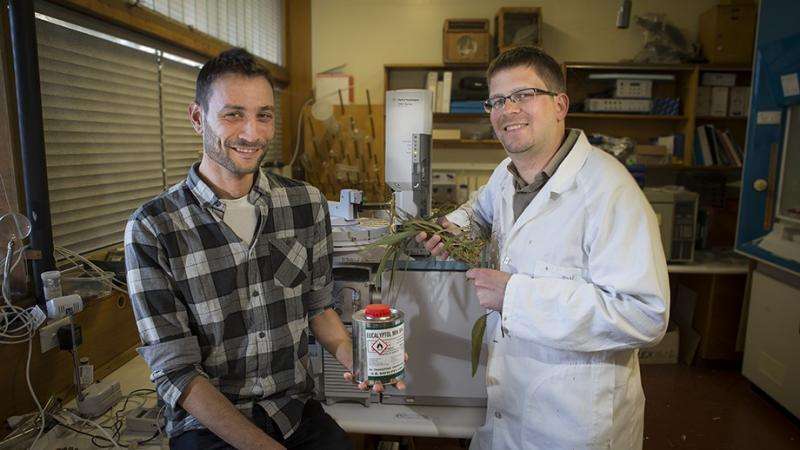Jet fuel may be grown on iconic Aussie gum trees

Scientists are a step closer to using Australia's iconic gum trees to develop low-carbon renewable jet and missile fuel.
Dr Carsten Kulheim from The Australian National University (ANU), a lead researcher in an international study published in Trends in Biotechnology, said renewable fuels that could power commercial aeroplanes were limited and expensive but a solution could be growing all around us.
"If we could plant 20 million hectares of eucalyptus species worldwide, which is currently the same amount that is planted for pulp and paper, we would be able to produce enough jet fuel for five per cent of the aviation industry," said Dr Kulheim from the ANU Research School of Biology.
The aviation sector globally produces about two per cent of all human-caused carbon dioxide emissions.
Eucalyptus-based fuel would initially be more expensive than fossil fuels to make on a mass scale, but would produce significantly less net carbon emissions.
Dr Kulheim said powering a modern jet aircraft with anything other than fossil fuels was difficult, due to the high energy required.
"Renewable ethanol and biodiesel might be okay for the family SUV, but they just don't have a high enough energy density to be used in the aviation industry," he said.
"Eucalyptus oils contains compounds called monoterpenes that can be converted into a very high energy fuel, and this high energy fuel can actually fly jets and even tactical missiles."
The study examines how to boost production of monoterpenes to obtain industrial scales of jet fuel from plants. This includes selecting appropriate species, genetic analysis, advanced molecular breeding, genetic engineering and improvements to harvesting/processing of the oils.
Certain monoterpenes commonly found in eucalyptus oils such as pinene and limonene, can be refined through a catalytic process, resulting in a fuel with energy densities suitable for jet fuel.
Turpentine from pine trees is another potential source of these monoterpenes, but pines grow more slowly than eucalypts.
Co-researcher David Kainer, a PhD candidate at the ANU Research School of Biology, said this knowledge can be used to enhance yield through breeding techniques and genetic selection.
"We can double, perhaps even triple, the yield that we can get per hectare to make a bigger dent in the aviation fuel industry," he said.
"We're looking for species that have the right type of oil and in addition to that, since the oil is in the leaves, they need to grow a lot of leaves in a short amount of time.
"Eucalyptus plantations globally produce up to 200kg of oil per hectare per year, but by selecting the best genetic stock they could produce more than 500kg of oil per hectare."
Mr Kainer said jet fuel derived from eucalyptus oils would be close to carbon neutral.
"It has minimal ecological impact," he said. "We can plant these trees on marginal lands that have low rainfall, and we can also plant them in agricultural systems that have salinity problems and help them defeat that problem."
More information: Ritesh Mewalal et al. Plant-Derived Terpenes: A Feedstock for Specialty Biofuels, Trends in Biotechnology (2016). DOI: 10.1016/j.tibtech.2016.08.003
Journal information: Trends in Biotechnology
Provided by Australian National University




















